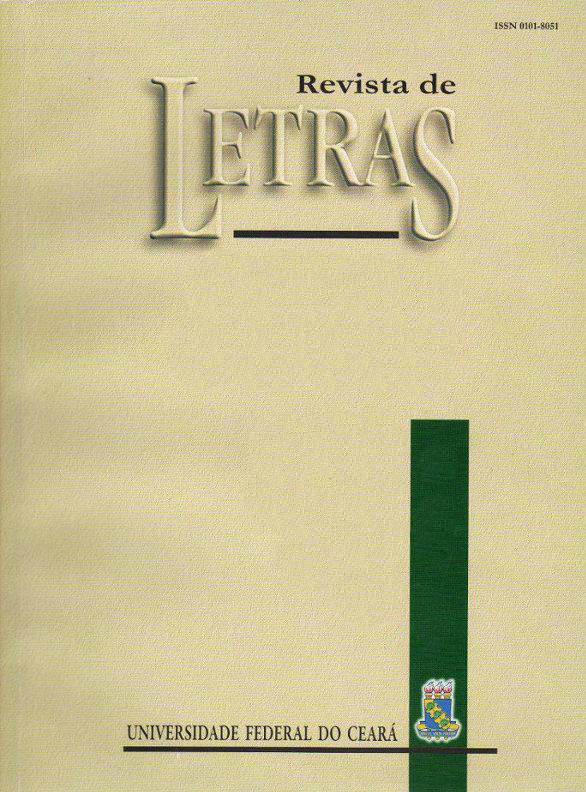ELEMENTOS CULTURAIS EM VERBETES DE DICIONÁRIO: AS EXPRESSÕES IDIOMÁTICAS
Resumo
O ensino/aprendizagem de línguas, seja ela qual for, é sempre influenciado pela cultura da sociedade na qual esta está inserida. Essa influência pode ser facilmente percebida se tomarmos como exemplo as expressões idiomáticas (EI) que pertencem ao acervo léxico dos falantes. O estudo dessas unidades se faz importante visto que elas pertencem ao léxico da língua e estão relacionadas à cultura, sendo utilizadas constantemente na comunicação. Elas apresentam forte ligação com a vivência e os costumes da comunidade de fala em que são utilizadas. As construções fraseológicas são constantemente utilizadas por falantes nativos, embora sejam relegadas a segundo plano quando, por exemplo, orienta-se que estas expressões não sejam usadas em situações formais de comunicação. Considerando que o dicionário é utilizado, no ensino de línguas, como um instrumento linguístico e de acordo com Nunes (2006), confere alteridade ao falante interferindo na relação que este tem com sua língua, partiremos de uma análise das EI constantes neste material. Para Borba (S/D) o uso adequado do dicionário pelos estudantes pode ajudá-los no desenvolvimento da capacidade leitora, assim, neste trabalho, temos o objetivo de verificar a presença e como ocorre a apresentação de expressões idiomáticas em um dicionário escolar de língua materna, o Houaiss. Delimitamos para esta análise, as expressões idiomáticas que utilizam as seguintes partes do corpo em sua composição (mão, pé, boca, nariz e olho). Estas palavras serão os verbetes de entrada para que se proceda à análise. Depois de delimitadas as palavras-entrada, analisamos como estas expressões são apresentadas e classificadas, tomando como base o que diz a teoria fraseológica (Zuluaga Ospina, 1980); (Tristá, 1988); (Corpas Pastor, 1996).Palavras-chave: Léxico. Expressões Idiomáticas. Dicionário.AbstractThe process of teaching and learning languages, no matter what they are, is always influenced by the culture of the society where they belong to. It is possible to realize that influence when idiomatic expressions, which belong to the lexicon of speakers, are taken as an example. In this respect, the study of lexical items is so important because they belong to the lexis of the language, and they are also related to the local culture, being used constantly in the communication process. Besides, they are linked with the way of living and also with the customs of the speaker’s community where they have been used. Phraseological constructions are constantly used by native speakers, although those sorts of lexicon have been remained in the background when people are advised, for example, that those kinds of expressions must not be used in formal situations of communication. Considering that dictionaries are used as a linguistic tool in the teaching of languages and that, according to Nunes (2006), they also allow otherness to speakers, interfering in their relationship to their language, this study analyzes the idiomatic expressions which are consisted in those teaching materials. According to Borba (S/D), the right use of dictionaries by students can help them to develop their reading skills, thus this study focuses on verifying the presence of idiomatic expressions and the way they have been presented in a school dictionary of mother tongue: the Houaiss. For that analysis, it was selected idiomatic expressions which have used, in their composition, the following parts of the body: hand, foot, mouth, nose and eye. Those words will be the lexicalentry to analyze them. After the choice of the words, those expressions will be presented and classified based on the Phraseology Theory (ZULUAGA OSPINA, 1980); (TRISTÁ, 1988); (CORPAS PASTOR, 1996).Keywords: Lexical. Idioms. Dictionary.Downloads
Não há dados estatísticos.
Downloads
Como Citar
CARVALHO, Gislene Lima; PONTES, Antônio Luciano. ELEMENTOS CULTURAIS EM VERBETES DE DICIONÁRIO: AS EXPRESSÕES IDIOMÁTICAS. Revista de Letras, [S. l.], v. 1, n. 32, 2016. Disponível em: http://periodicos.ufc.br/revletras/article/view/1452. Acesso em: 30 nov. 2024.
Edição
Seção
ARTIGOS
Licença
Autores que publicam nesta revista concordam com os seguintes termos:- Autores mantêm os direitos autorais e concedem à revista o direito de primeira publicação, com o trabalho simultaneamente licenciado sob a Licença Creative Commons Attribution que permite o compartilhamento do trabalho com reconhecimento da autoria e publicação inicial nesta revista.
- Autores têm autorização para assumir contratos adicionais separadamente, para distribuição não-exclusiva da versão do trabalho publicada nesta revista (ex.: publicar em repositório institucional ou como capítulo de livro), com reconhecimento de autoria e publicação inicial nesta revista.
- Autores têm permissão e são estimulados a publicar e distribuir seu trabalho online (ex.: em repositórios institucionais ou na sua página pessoal) a qualquer ponto antes ou durante o processo editorial, já que isso pode gerar alterações produtivas, bem como aumentar o impacto e a citação do trabalho publicado (Veja O Efeito do Acesso Livre).

.png)






.png)
